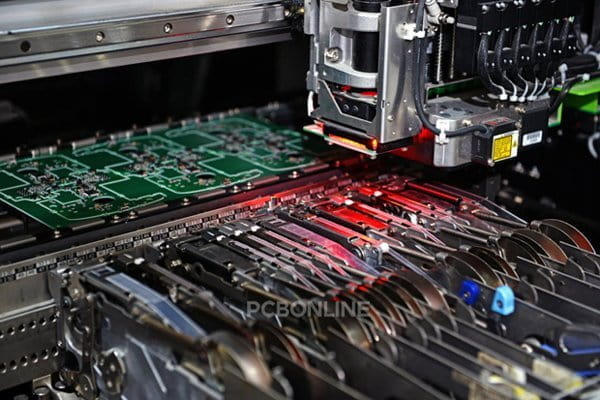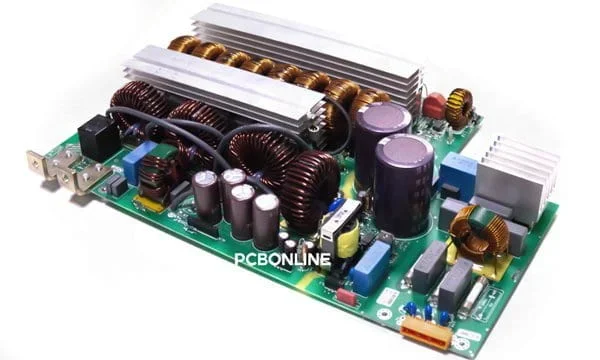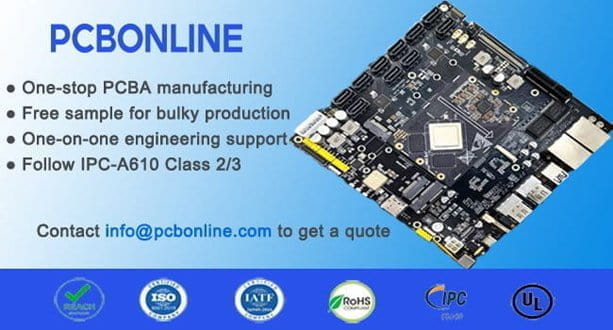PCB assembly houses are so many in the market. How to choose reliable and cost-effective PCB assembly services from various PCB service providers? How can to reduce PCB assembly costs without sacrificing product quality? In this post, you will get the answers to the frequently asked questions about PCB assembly services.
FAQ1: What are PCB Assembly Services?
![]()
PCB assembly services are also known as circuit card assembly services, printed circuit board assembly services, and electronics assembly.
The PCB assembly service is part of electronics manufacturing to mount electrical parts on printed circuit boards by surface mount technology (SMT) and through-hole technology (THT).
Typically, an original equipment manufacturer (OEM), research institute, or business maker doesn't fabricate and assemble the printed circuit boards that they designed but outsources PCB fabrication and assembly to a PCB assembly service provider.
If you want PCB assembly services, you should provide the necessary documentation for PCB assembly, including Gerber, BOM, and pick-and-place files. The CAM and BOM engineers from the PCB assembly house will review your documentation to ensure the feasibility of fabrication.
After PCB assembly, your PCB design is made into real modules or semi-finished products. PCB assembly service providers such as PCBONLINE can further assemble them with enclosures to be end products.

According to the different quantities of circuit boards to assemble, there are prototype assembly, small batch PCB assembly, batch PCB assembly, and high volume PCB assembly.
FAQ2: How Much Does It Cost to Assemble PCBs at PCB Assembly Houses?
The price of a PCB assembly ranges from $3 or $4 to hundreds of US dollars, depending on the complexity of the PCB, component quantity and types, and PCB assembly method (automatic or manual).

3 Factors Affecting PCB Assembly Service Costs - PCB complexity, components, and assembly methods.
PCB complexity: the more complex PCB (such as HDI, high-frequency, and rigid-flex PCB), the higher PCB manufacturing and assembly costs. If the PCB needs drilling, such as buried vias, blind vias, or microvias, its manufacturing cost is higher than those not. If the PCB is designed to be fine-pitch (high-density wiring), its assembly service costs more.
Components: the more components a PCB assembly requires, the cost is higher. If PCBA has expensive components, such as ICs and FPGAs, the assembly cost is also higher. Brand-new OEM components are better and more expensive than aftermarket or refurbished components.
Assembly methods: automatic PCB assembly is more expensive than manual assembly. The automatic assembly has stable quality and high precision, and manual assembly has a higher scrap rate. It costs about one thousand US dollars for an SMT assembly line to start every time.
The larger the quantity of PCB assembly, the lower the unit price of PCB assembly services.
Besides, lead-free PCB assembly requires higher reflow soldering temperatures than lead assembly, so lead-free assembly costs more.
FAQ3: How to Reduce PCB Assembly Services Costs without Sacrificing Quality?
To reduce PCB assembly services costs without sacrificing product quality, you can do the following things:
1. Choose a reliable and cost-effective PCB assembly house. You should ask the PCB assembly house these questions: what does the PCB assembly house consider fine-pitch assembly? What is the smallest passive footprint it can handle? Does it deal with leadless assembly? Can it conduct IC programming, conformal coating, four-terminal sensing, and so on for advanced PCBs? Which suppliers do the PCB assembly house source components from? Feel free to ask about the PCB assembly details you are concerned about before you cooperate with the PCB assembly house.
2. Ask the PCB assembly house to source components instead of buying them independently. PCB assembly houses source electrical parts at bulk pricing, and the components cost less than buying on your own. Besides, you have to pay the shipping fee for the components. But you'd better pay attention to which component suppliers that the PCB assembly house sources from.
3. Provide complete, clear BOM and pick-place files to the PCB assembly house. A BOM should note the required component reference, manufacturer, quantity, description (values, tolerance, package), P/N, and manufacturer P/N. A pick-place file should note the component reference, package, angle, X and Y coordinates, and orientation. Besides, you can provide the assembly drawing for the first article test, the 3D drawing of the PCBA, the schematic, and the testing file that notes the procedures and methods of end-product testing.
4. Ask the PCB assembly house for design for test (DFT) and manufacturing (DFM), and for the best result, design for excellence (DFX). Don't worry about the extra service fees, as DFM, DFT, and DFX can reduce the risk of issues happening during PCB assembly or when the product is used.
5. Optimize your PCB design. PCB design optimization doesn't mean sacrificing product functions or quality. On the premise of maintaining the desired effect, you can design the PCB shapes to be the normal square or rectangle and reduce the complexity of the circuit.
FAQ4: Any Reliable and Cost-Effective PCB Assembly Services Suppliers?
PCBONLINE is a reliable PCB assembly house for its high quality, good services, and cost-effectiveness.

PCBONLINE has ≤0.5mm fine-pitch assembly and lead-free assembly capabilities, and the smallest passive footprint it can handle is 0201. Its PCB assembly services follow the IPC-A-610 Class 2 and 3 standards. The PCB assembly services include PCB manufacturing, component sourcing, PCB assembly, testing, shipping, and free DFM, DFT, and DFX.
PCBONLINE has strict quality control over components sourced from component suppliers, and the components and materials are traceable. You can track the whole process online.
In addition, PCBONLINE can provide four-terminal sensing, thermal aging test, conformal coating, IC programming, end-product assembly, and testing.
How cost-effective are the PCB assembly services at PCBONLINE?PCBONLINE gives reasonable quotes. When you compare it with other PCB assembly houses, you will find how cost-effective the batch PCB assembly at PCBONLINE is. For ≥$2000 orders, PCBONLINE offers free complete PCBA samples, functional testing, and discounts.
For all online orders, PCBONLINE gives $100 off coupons once you register. When you invite customers and they complete orders, PCBONLINE gives discounts to both you and the invitee. When you complete PCBA orders online, your account receives points that can redeem coupons for online purchases.
Besides, the professional solution experts at PCBONLINE provide free one-on-one engineering support and save clients' costs by manufacturing optimization and the latest technologies.
FAQ5: How is a PCB Assembled?
The PCB assembly processes vary depending on the circuit board requirements, such as the halogen-free, lead-free, fine-pitch, double-sided, etc. However, the basic steps are PCB/Gerber files check, BOM check, component sourcing, PCB and SMT stencil manufacturing, SMT assembly, and PTH Assembly.
FAQ6: What is the Process of SMT Assembly?
SMT assembly can be fully automatic.
Step 1. PCBs and components are checked. PCBs are placed on the feeders. Passive SMDs with footprints 0201, 0402, 0603, and 0804 are placed in the component rolls on the high-speed mounting machine. Passive SMDs with a footprint larger than 0804, such as BGAs, SOPs, and QFPs, are placed in the component rolls on the functional mounting machine.
Step 2. PCBs are sent into the SMT solder paste printing machine one by one, in which solder paste is printed on the PCB pads.
Step 3. Solder paste inspection (SPI). The SPI machine checks the solder paste shape and thickness on PCBs. Qualified solder paste printing should fully cover the required PCB pads, and the thickness ranges from 0.09mm to 0.15mm depending on the product requirements.
Step 4. SMD assembly. The PCBs are sent into the high-speed mounting machine and functional mounting machine one by one. The SMDs are picked and placed on the required PCB pads automatically.
Step 5. reflow soldering. PCBAs are sent into the reflow soldering oven one by one. In the oven, the PCBAs are pre-heated, warmed, and gradually cooled down. In the process, solder paste melts and solidifies, and SMDs are soldered onto the circuit board.
Step 6. Automatic optical inspection (AOI). The PCBAs are sent through the AOI machine one by one. An infrared camera scans the surface of the PCBAs, and the machine analyses and compares the images with the set-up parameters. An AOI technician watches the machine screen and records all possible issues if there are any.
If the PCBA has any issues, it is returned for rework. A reworked PCBA is isolated from other PCBAs.
FAQ7: What is the Process of PTH Assembly?
PTH assembly, or DIP, is half-automatic.
Step 1. DIP technicians plug in the PTH component pins through the required PTH holes. This is done manually.
Step 2. Wave soldering. PCBAs are sent into the pre-heating machine and wave soldering oven one by one. In the wave soldering oven, the gaps between the PTH component leads and the PTH hole wall are filled with liquid tin. Then PCBAs are cooled down naturally.
Step 3. Technicians trim the PTH pins to 2mm and package the PCBAs. Then the PCBAs are shipped.
If the PCBAs have BGAs, an X-ray test is conducted before reflow soldering. Depending on the different product requirements, the PCB assembly services can also include PCB cleaning, PCBA functional testing, thermal aging test, four-terminal sensing, conformal coating, IC programming, end-product assembly, etc.
Conclusion
This article introduces what PCB assembly services are, how PCBs are assembled, factors that affect PCB assembly service costs, and how to reduce PCB assembly. This article recommends a reliable and cost-effective PCB assembly services provider, PCBONLINE. If you are looking for PCB quality and economical services for your company, research institute, or your own business, contact PCBONLINE or get a quote online now.




